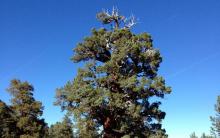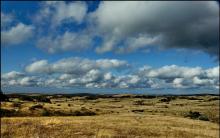Scientists have found that the transparency of the waters of the Atlantic Ocean is 66 m, the Pacific - 62 m, the Indian - 50 m, but the cleanest waters of the Arctic Ocean, although it is always covered with ice. Many seas of warm oceans also boast clean waters. However, ever-increasing economic and other human activities are having a detrimental effect on the waters of the world’s oceans; the cleanest seas may soon be included in the sad list of dirty ones. What are they, the remaining cleanest seas on our planet?
1. Wedell Sea
The Wedell Sea, located off the coast of Antarctica, has the purest salt water on the planet. Its bottom can be seen through 79 meters of water, which is not possible anywhere else. Distilled water is even clearer. The area of the Wedell Sea is 2.9 million square meters. km, and the greatest depth is about 6 kilometers. This is one of the coldest seas on the planet; almost the entire year it is covered in ice two meters thick. Glaciers are constantly sliding from the coast of Antarctica into the sea, from which giant icebergs periodically break off.
In winter, the water in the Wedell Sea can have a temperature of -2 degrees. You obviously won’t be able to sail on a yacht here, because the conditions for navigation off the coast of Antarctica are extremely unfavorable. The waves look especially frightening, the spray of which instantly freezes under the influence of the icy wind, quickly encasing the ship in an icy shell. This sea was discovered in 1823 by an expedition led by D. Wedell, after whom it was named.
2. Dead Sea

The Dead Sea is located between Jordan and Israel, covering an area of only 810 square meters. km. In this sea, or more precisely, an endorheic lake, there is the saltiest, but clean water, similar in composition to strong brine. Nothing survives in such an environment, hence the name of the lake. As soon as a fish gets here from the Jordan River flowing into the lake, it instantly dies. The same applies to bacteria. But swimming in the Dead Sea is much easier, especially for those who do not know how to do it at all, since it is impossible to drown here - a saturated salt solution pushes the body like a cork to the surface. The water of the Dead Sea is recognized as healing, so people come here from all over the world to improve their health.
On our planet there are areas where a person experiences special sensations: a surge of energy, euphoria, a desire to improve or spiritually...
3. Sargasso Sea

This is also a very conventional sea, located in the middle of the Atlantic and has no shores. The area allocated for this concept is approximately 7 million square meters. km, of which 6 million are covered with a thick carpet of Sargassum algae, hence the name of the sea. There is a very rich marine fauna here: a variety of fish, crabs, sea turtles and many others. The water in the Sargasso Sea is incredibly warm, even in winter not lower than +26 degrees.
The maximum depth under the algae reaches 7 km. This huge pile of algae floating in one place was noticed by Columbus, who called it a “pot of algae.” But the ecological situation here is deteriorating year by year, because busy sea routes pass from all sides.
4. Red Sea

The water in the Red Sea is incredibly clear, warm and salty - with an average temperature of +30 degrees, its salinity can reach up to 42% in some places. This unique sea has no rivers flowing into it, but for the same reason silt and clay do not fall into it. Fields of coral are scattered on the seabed, giving it the characteristic hue reflected in the name. The underwater world of the Red Sea is incredibly beautiful and rich, which is why travelers are so eager to come here. And coral reefs attract schools of various fish here.
In the waters of the Red Sea, scientists have counted over 3,000 species of fish and invertebrates, as well as about 300 varieties of corals. Here you can meet green turtles, dolphins, sharks, and other inhabitants of the sea. But what the sea does not receive from the rivers, people make up for by polluting it from the numerous passing ships, because the busiest trade route in the world operates here.
5. Cretan Sea

North American relief can be divided into several types: in the central and northern parts you can admire the delightful plains, ...
The Mediterranean Sea near the coast of the island of Crete (between it and the Cyclades islands) is called the Cretan Sea. Then it passes into the Aegean Sea. The water here is very clean. Tourists have chosen northern Crete due to the clear water of its coastline and the abundance of beautiful and well-maintained sandy beaches. For the cleanliness of the water, many of Crete's beaches have been awarded the European Blue Flag.
6. Mediterranean Sea

The vast Mediterranean Sea belongs to the Atlantic Ocean. But its purity on average is a relative concept. Cleaner waters are found off the coast of Greece (see above). But areas of the sea closer to the coasts of Italy and Spain are much more polluted. Spain was even fined for non-compliance with environmental standards, but it continues to do so. But still, the fauna here is very diverse - there are about 550 species of fish alone.
7. White Sea

The White Sea is part of the Arctic Ocean, and its waters are considered the most transparent of the waters of the seas washing the shores of Russia. It has an incredibly rugged coastline, causing it to be called "Snake Bay" by locals. The area of the White Sea is over 90,000 square meters. km, but it is shallow - only 343 m. The average summer water temperature in the sea is +16, and in winter it can cool to -1.7 degrees. For half the year, the White Sea is covered with ice 1.5 meters thick.
8. Arabian Sea

The Arabian Sea belongs to the Indian Ocean basin and is also considered quite clean. It spreads over 3.86 million square meters. km, and its maximum depth reaches approximately 6 kilometers. The clearest water is near the Maldives archipelago and the uninhabited island of Astola, which is a popular ecotourism site. The water in the Arabian Sea is very warm throughout the year - if in summer it warms up to +27 degrees, then in winter it cools only slightly - to +22 degrees. Sailors from different countries called it differently: Persian, Omani, Sindhu, Green.
It is difficult to scare a Russian person with anything, especially bad roads. Even safe routes claim thousands of lives a year, let alone those...
9. Philippine Sea

The Philippine Sea is part of the Pacific Ocean. It is the largest sea on our planet, with an area of 5.73 million square meters. km (if you do not take into account the very conventional Sargasso Sea). But the Philippine Sea also does not have clear boundaries outlined by land, and in this it approaches the same Sargasso. Its conditional borders are considered to be the shores of the islands of the Japanese archipelago, the Philippine archipelago, and also the island of Taiwan. The water in the Philippine Sea has moderate salinity, and the richest marine fauna thrives in its thickness. Whales come here, so in addition to fishing, whaling also exists here.
10. Andaman Sea

Another warm tropical sea, the Andaman Sea, also belonging to the Indian Ocean basin, boasts high water transparency. The Andaman Sea is bounded on one side by the Malacca Peninsula and on the other by the Indochina Peninsula. Its water area is 605,000 square meters. km. The exact history of the origin of the name of this sea is unknown, but there is a version that the inhabitants of Malaysia named it that way in honor of the god Anduman. This sea has an incredibly rich list of inhabitants; there are more than 400 species of fish alone, including reef and flying ones. There are such unique animals here as Irrawaddy dolphins, sailfish, and dugongs.











The most beautiful motorcycles in the world
Which sea is the cleanest in the world?
Top 10 Most Expensive Furs
The largest and most luxurious casinos in the world
Knightly orders of Europe XI - XIII centuries